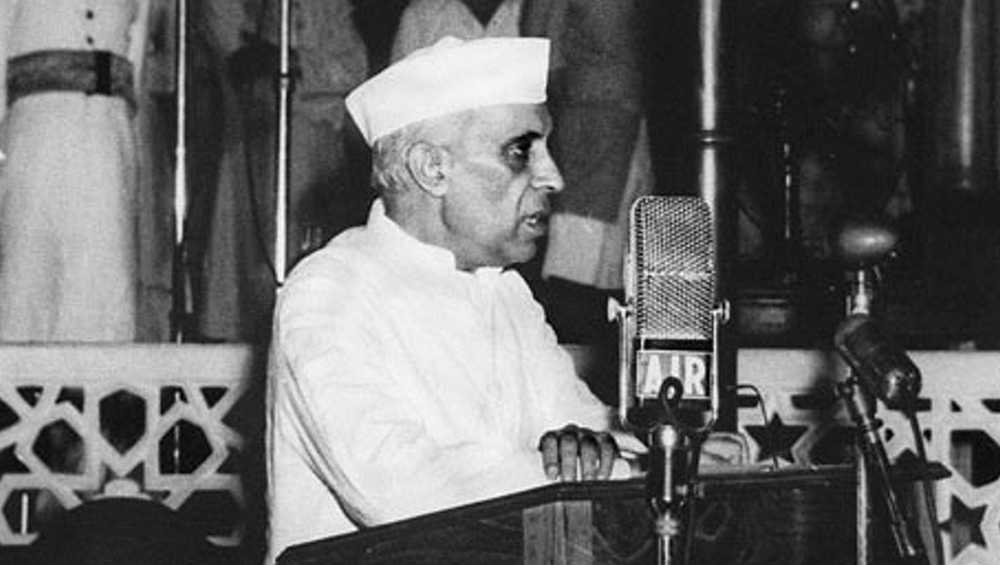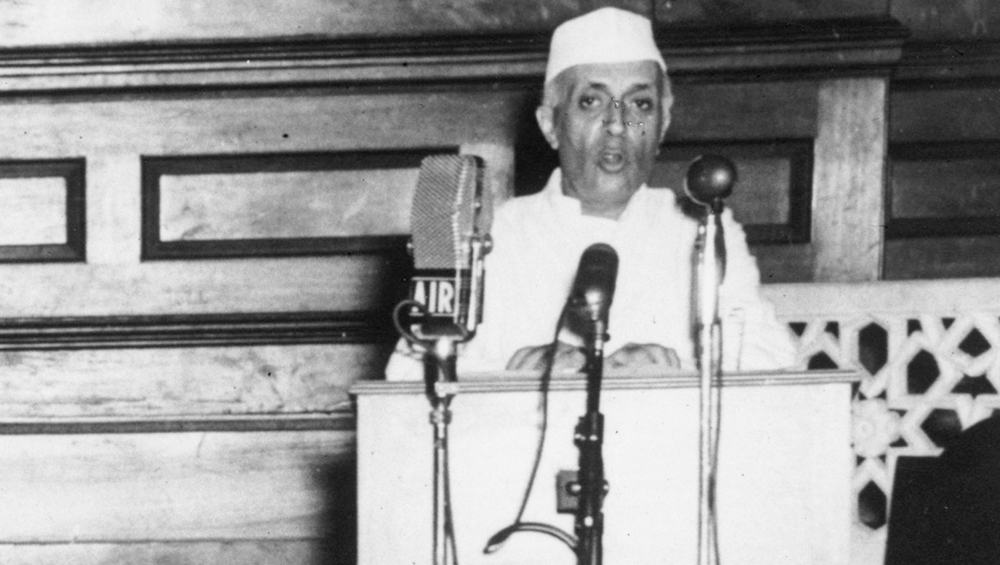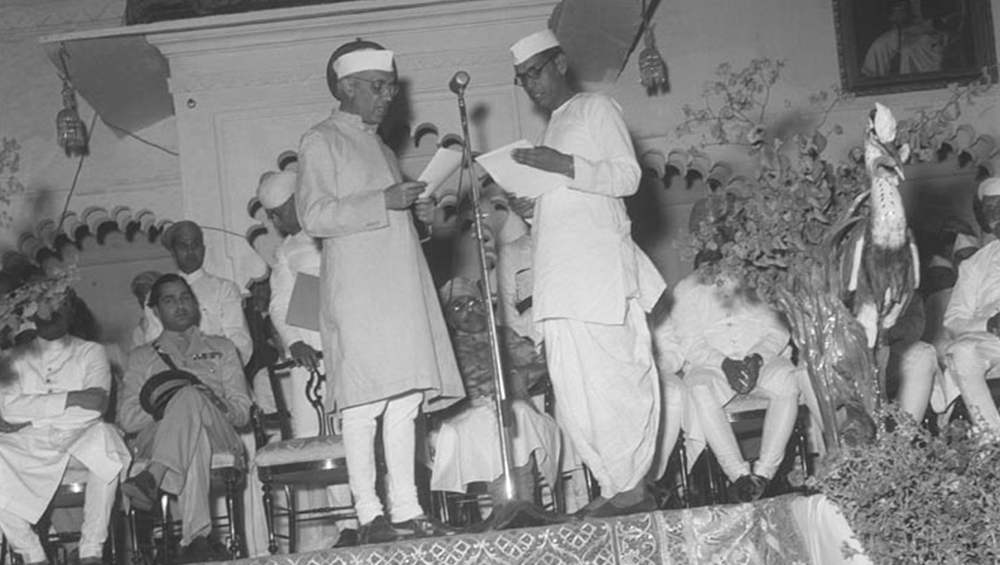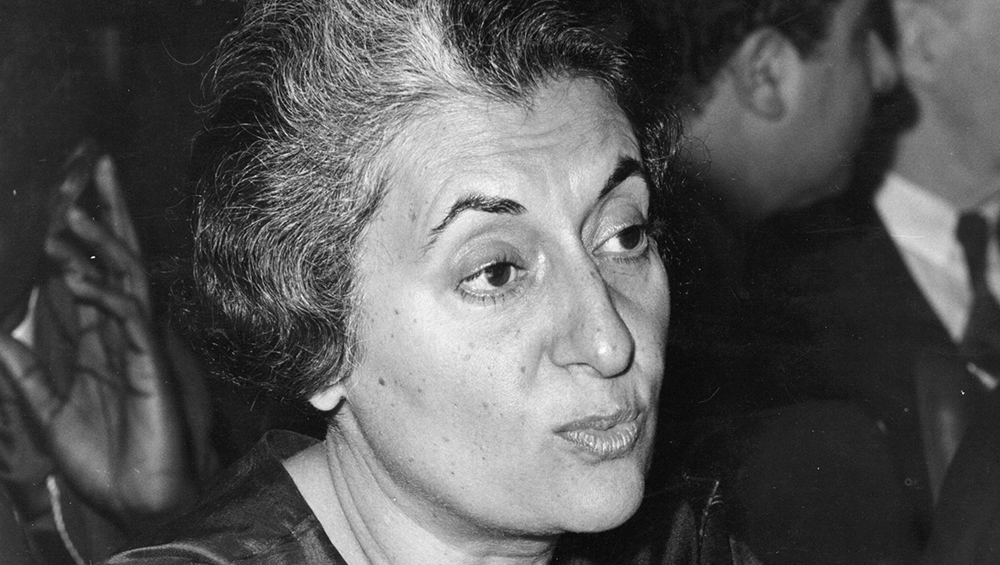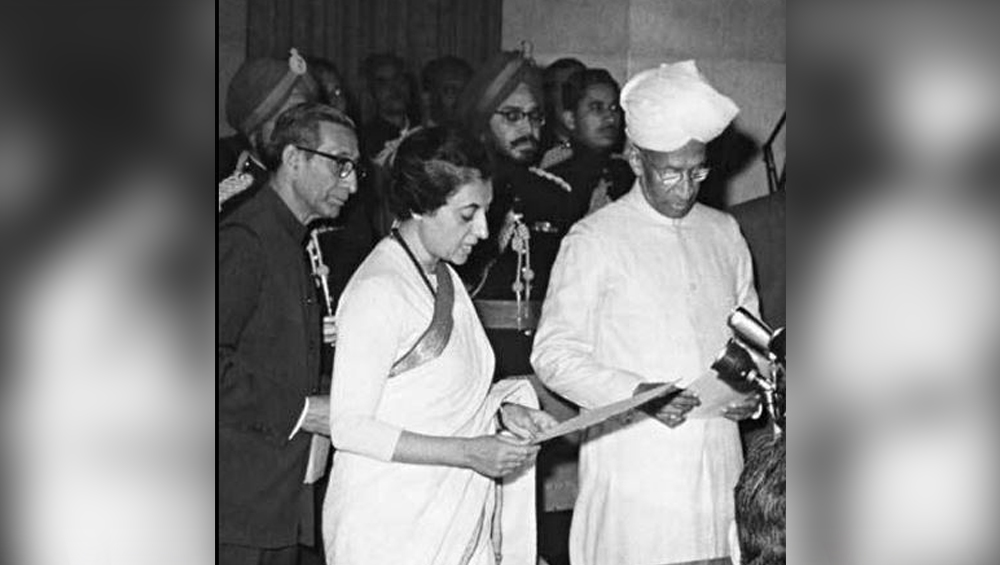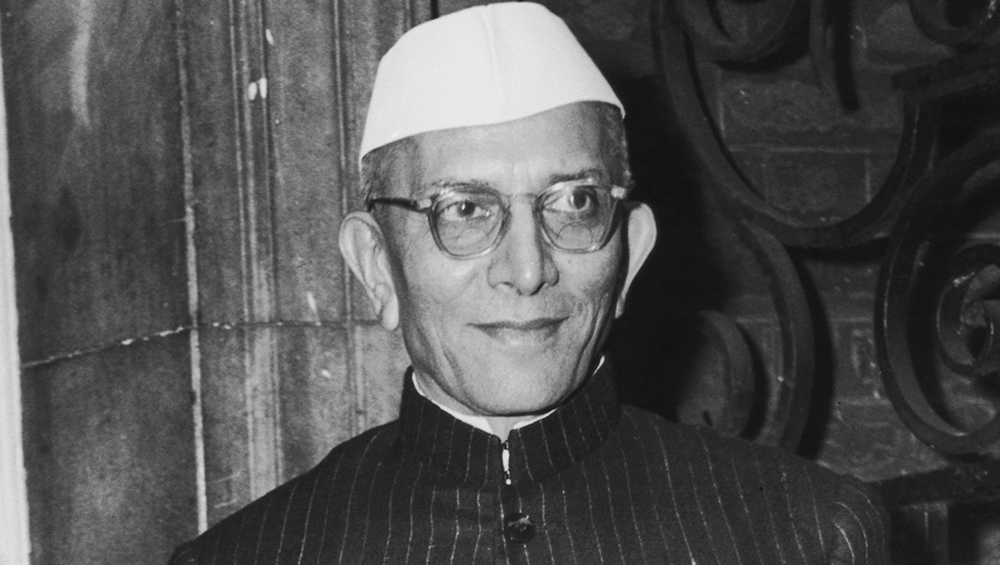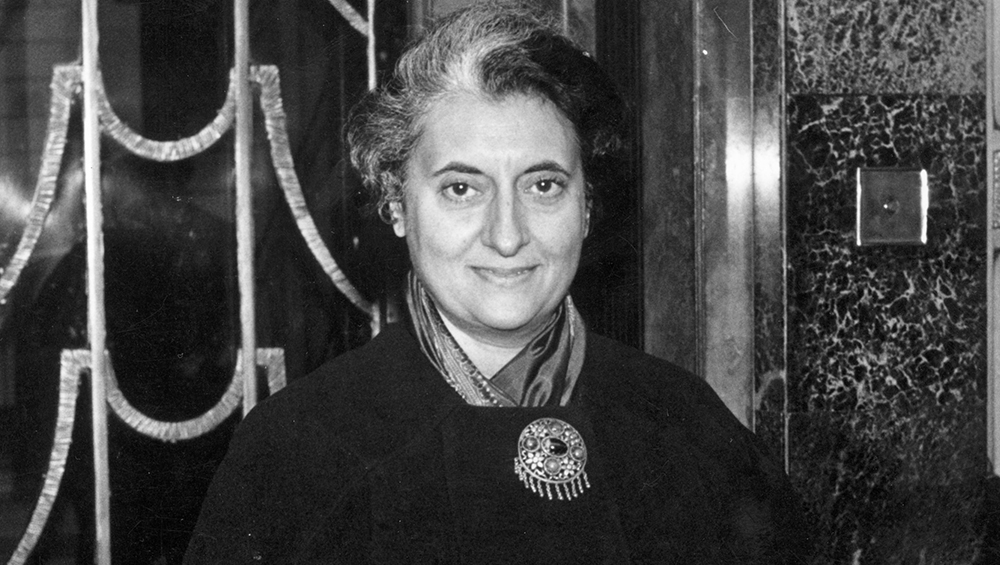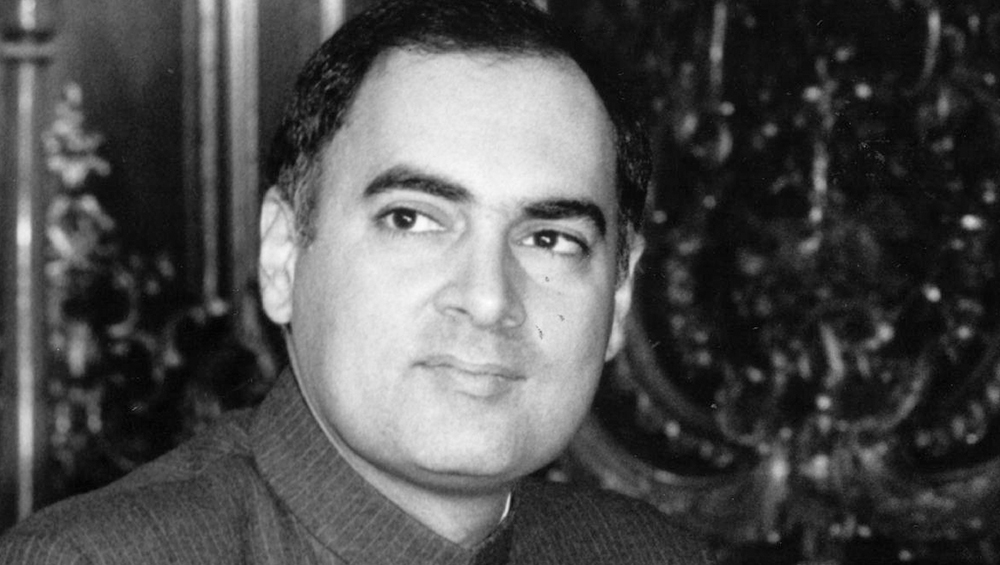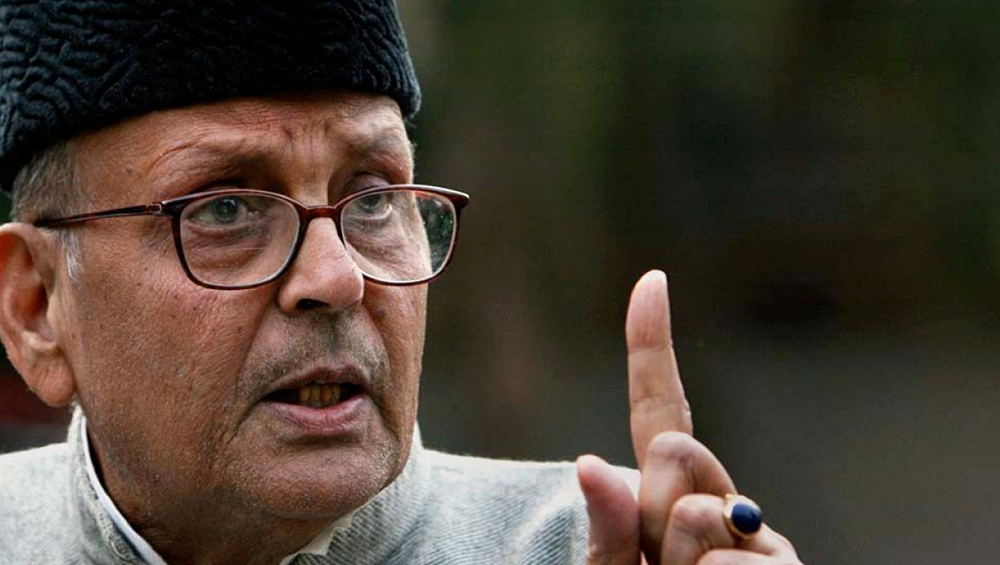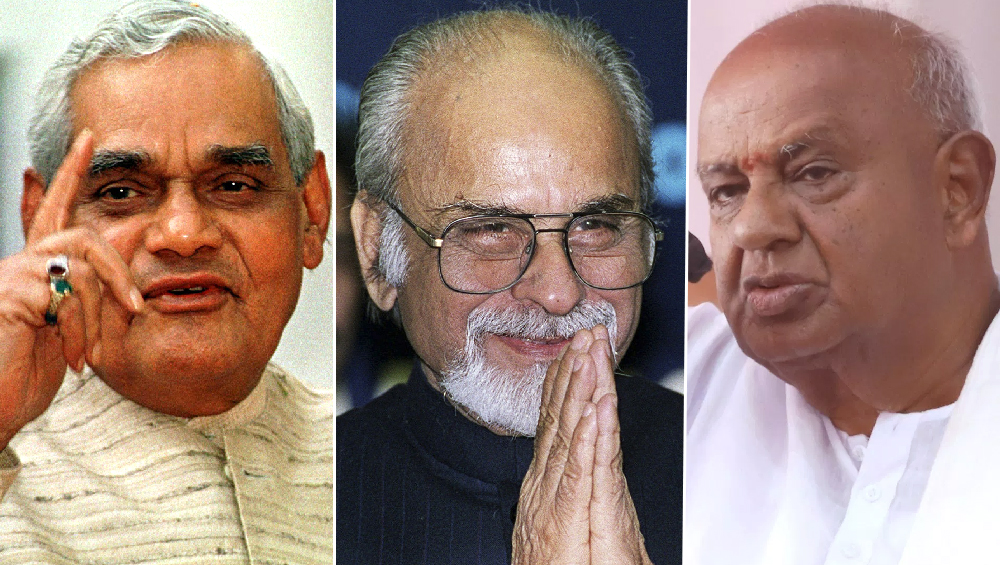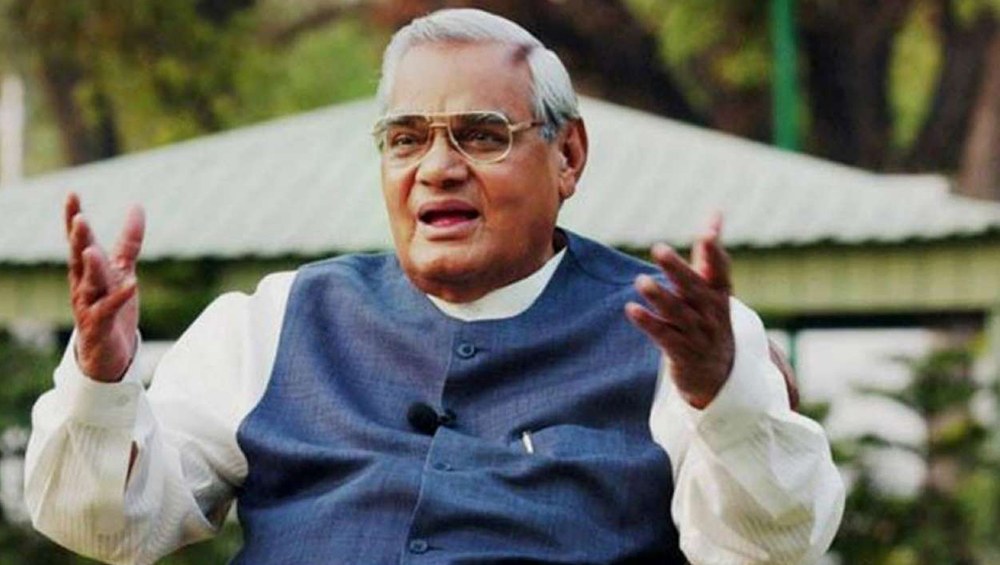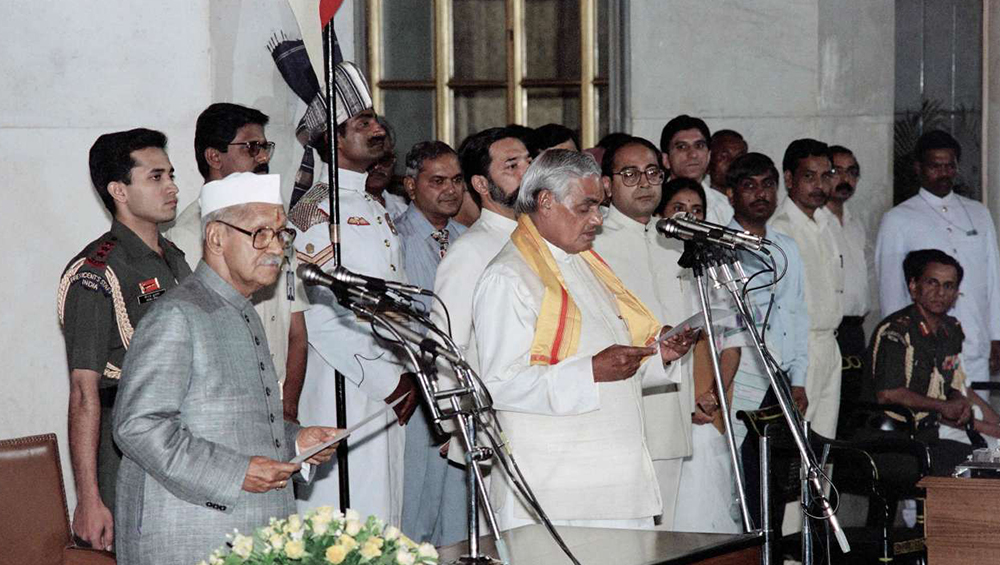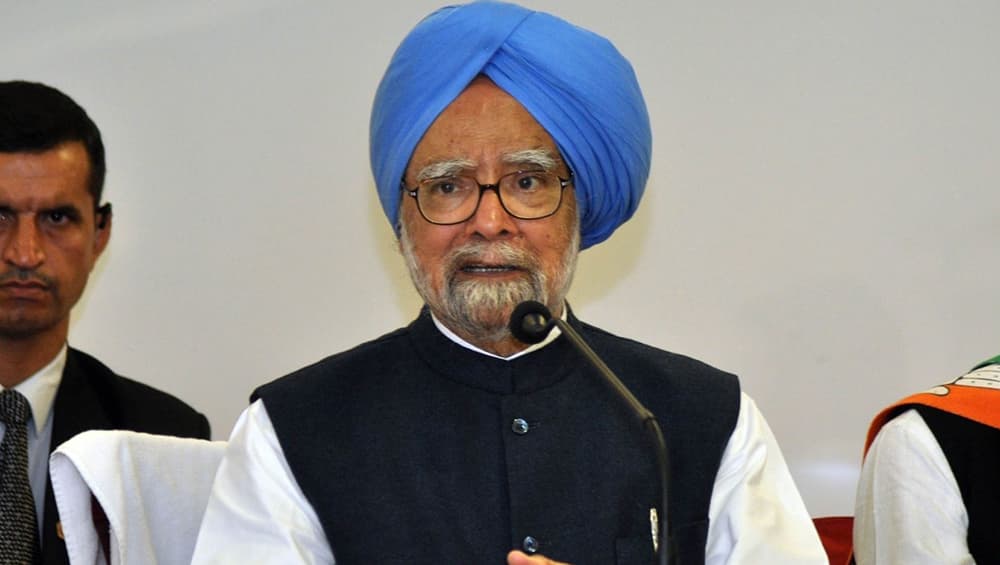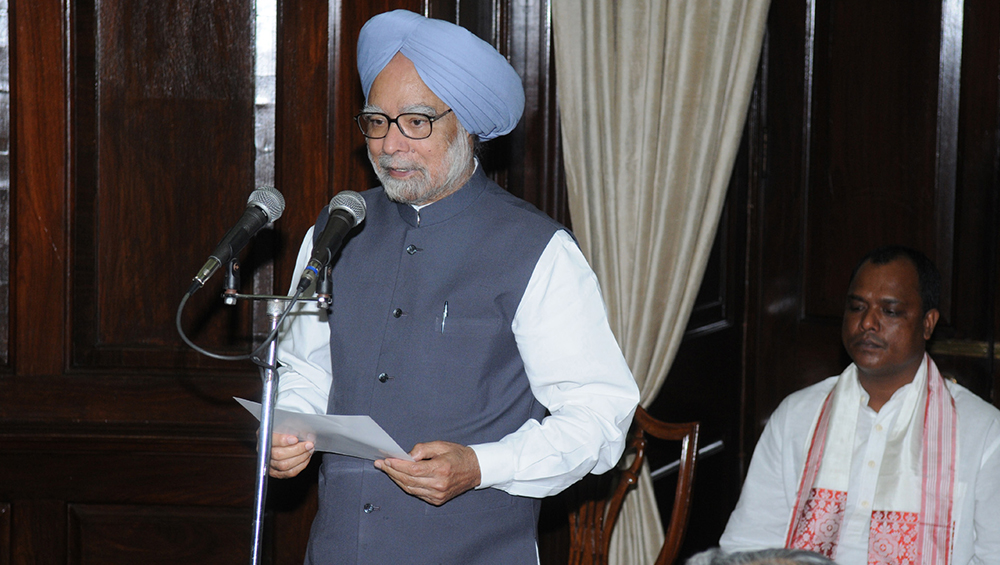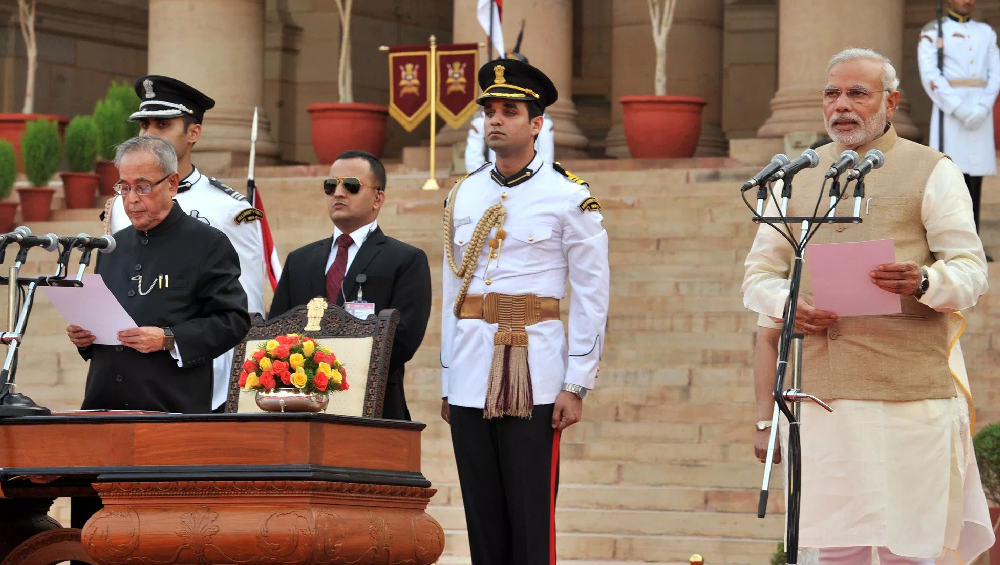Elections
Lok Sabha elections 2024 Phase-wise schedule
| Polling Date | |
|---|---|
| Polling Date Phase 1 | 19-April-2024 |
| Polling Date Phase 2 | 26-April-2024 |
| Polling Date Phase 3 | 07-May-2024 |
| Polling Date Phase 4 | 13-May-2024 |
| Polling Date Phase 5 | 20-May-2024 |
| Polling Date Phase 6 | 25-May-2024 |
| Polling Date Phase 7 | 01-June-2024 |
| Date of counting of votes/Result | 04-June-2024 |
About Indian Elections
India is a democratic country where elections are held for the Parliament, legislative assemblies and various local bodies that govern their respective areas. In a normal case, elections for the Parliament and state legislative assemb...
India is a democratic country where elections are held for the Parliament, legislative assemblies and various local bodies that govern their respective areas. In a normal case, elections for the Parliament and state legislative assemblies are held every five years. Elections for one-third of the seats of the upper house of the Parliament, the Rajya Sabha, are conducted every two years. The Election Commission of India is the body that conducts polls.
Members of lower houses of the Parliament and state legislative assemblies, known as Lok Sabha and Vidhan Sabha respectively, are elected directly by people. Members of Rajya Sabha are elected indirectly by the state legislative assemblies based on proportional representation. Similarly, Members of state legislative councils, also known as Vidhan Parishad, are elected indirectly through local bodies.
The Prime Minister of India is elected by members of the Lok Sabha. Likewise, the Chief Minister is elected by members of Vidhan Sabha. The President of India is indirectly elected by an electoral college comprising the Parliament of and the legislative assemblies of each state.
| Party | Color |
|---|---|
| Bharatiya Janata Party | |
| Indian National Congress | |
| Dravida Munnetra Kazhagam | |
| Yuvajana Sramika Rythu Congress Party | |
| All India Trinamool Congress | |
| Biju Janata Dal | |
| Telangana Rashtra Samithi | |
| Mizo National Front | |
| Nationalist Democratic Progressive Party | |
| Sikkim Krantikari Morcha | |
| Nationalist Congress Party |
Past Lok Sabha Election Results
| Year | Election | Seats | Leading Party |
|---|---|---|---|
| 2024 | 18th Lok Sabha | Awaiting / 543 | - |
| 2019 | 17th Lok Sabha | 303 / 542 | BJP |
| 2014 | 16th Lok Sabha | 282 / 545 | BJP |
| 2009 | 15th Lok Sabha | 206 / 545 | INC |
| 2004 | 14th Lok Sabha | 145 / 543 | INC |
| 1999 | 13th Lok Sabha | 182 / 545 | BJP |
| 1998 | 12th Lok Sabha | 182 / 545 | BJP |
| 1996 | 11th Lok Sabha | 161 / 543 | BJP |
| 1991 | 10th Lok Sabha | 244 / 521 | INC |
| 1989 | 9th Lok Sabha | 195 / 529 | INC |
| 1984 | 8th Lok Sabha | 404 / 514 | INC |
| 1977 | 6th Lok Sabha | 298 / 542 | JP |
| 1971 | 5th Lok Sabha | 352 / 518 | INC |
| 1967 | 4th Lok Sabha | 283 / 520 | INC |
| 1962 | 3rd Lok Sabha | 361 / 494 | INC |
| 1957 | 2nd Lok Sabha | 371 / 494 | INC |
| 1951 | 1st Lok Sabha | 364 / 489 | INC |
| Party | Color |
|---|---|
| AITC | |
| BJP | |
| TRS | |
| AIADMK | |
| SKM | |
| INC | |
| Biju Janata Dal | |
| NDPP | |
| Mizo National Front | |
| NPP | |
| SHS | |
| CPI(M) | |
| Governor's rule | |
| AAP | |
| JD(U) | |
| YSRCP |
Past Assembly Election Results
| Year | State | Seats | Leading Party |
|---|---|---|---|
| 2020 | Bihar | 75 / 243 | RJD |
| 2020 | Delhi | 62 / 70 | AAP |
| 2019 | Sikkim | 17 / 32 | SKM |
| 2019 | Andhra Pradesh | 151 / 175 | YSRCP |
| 2019 | Odisha | 112 / 147 | BJD |
| 2019 | Arunachal Pradesh | 40 / 60 | BJP |
| 2019 | Maharashtra | 105 / 288 | BJP |
| 2019 | Haryana | 40 / 90 | BJP |
| 2019 | Jharkhand | 47 / 81 | JMM+INC |
| 2018 | Karnataka | 104 / 224 | BJP |
| 2018 | Tripura | 35 / 59 | BJP |
| 2018 | Nagaland | 27 / 60 | NPF |
| 2018 | Meghalaya | 21 / 60 | INC |
| 2017 | Punjab | 77 / 117 | INC |
| 2017 | Uttar pradesh | 312 / 403 | BJP |
| 2017 | Uttarakhand | 57 / 70 | BJP |
| 2017 | Manipur | 28 / 60 | INC |
| 2017 | Himachal Pradesh | 44 / 68 | BJP |
| 2017 | Gujarat | 99 / 182 | BJP |
| 2017 | Goa | 17 / 40 | INC |
| 2016 | Assam | 60 / 126 | BJP |
| 2016 | Kerala | 58 / 140 | CPI(M) |
| 2016 | West Bengal | 211 / 294 | AITC |
| 2016 | Pondicherry | 15 / 30 | INC |
| 2016 | Tamil Nadu | 134 / 232 | AIADMK |
| 2015 | Bihar | 80 / 243 | RJD |
| 2015 | Delhi | 67 / 70 | AAP |
| 2014 | Jammu and Kashmir | 28 / 87 | JKPDP |
| 2014 | Telangana | 63 / 119 | TRS |
| 2014 | Odisha | 117 / 147 | BJD |
| 2014 | Arunachal Pradesh | 42 / 60 | INC |
| 2014 | Andhra Pradesh | 117 / 294 | TDP |
| 2014 | Sikkim | 22 / 32 | SDF |
| 2014 | Maharashtra | 122 / 288 | BJP |
| 2014 | Haryana | 47 / 90 | BJP |
| 2014 | Jharkhand | 37 / 81 | BJP |
| 2013 | Delhi | 31 / 70 | BJP |
| 2013 | Rajasthan | 163 / 200 | BJP |
| 2013 | Chhattisgarh | 50 / 90 | BJP |
| 2013 | Nagaland | 38 / 60 | NPF |
| 2013 | Karnataka | 122 / 224 | INC |
| 2013 | Tripura | 49 / 60 | CPI |
| 2013 | Meghalaya | 29 / 60 | INC |
| 2013 | Madhya Pradesh | 165 / 230 | BJP |
| 2013 | Mizoram | 34 / 40 | INC |
| 2012 | Goa | 21 / 40 | BJP |
| 2012 | Gujarat | 119 / 182 | BJP |
| 2012 | Himachal Pradesh | 36 / 68 | INC |
| 2012 | Manipur | 42 / 60 | INC |
| 2012 | Punjab | 56 / 117 | SAD |
| 2012 | Uttar pradesh | 224 / 403 | SP |
| 2012 | Uttarakhand | 32 / 70 | INC |
| 2011 | Assam | 78 / 126 | INC |
| 2011 | Kerala | 45 / 140 | CPM |
| 2011 | Pondicherry | 15 / 30 | AINRC |
| 2011 | Tamil Nadu | 150 / 234 | AIADMK |
| 2011 | West Bengal | 184 / 294 | AITC |
| 2010 | Bihar | 115 / 243 | JD(U) |
| 2009 | Maharashtra | 82 / 288 | INC |
| 2009 | Arunachal Pradesh | 42 / 60 | INC |
| 2009 | Haryana | 40 / 90 | INC |
| 2009 | Jharkhand | 18 / 81 | JMM |
| 2009 | Odisha | 103 / 147 | BJD |
| 2009 | Sikkim | 32 / 32 | SDF |
| 2009 | Andhra Pradesh | 156 / 294 | INC |
| 2008 | Delhi | 43 / 70 | INC |
| 2008 | Jammu and Kashmir | 28 / 87 | JKN |
| 2008 | Rajasthan | 96 / 200 | INC |
| 2008 | Chhattisgarh | 50 / 90 | BJP |
| 2008 | Nagaland | 26 / 60 | NPF |
| 2008 | Karnataka | 110 / 224 | BJP |
| 2008 | Madhya Pradesh | 173 / 230 | BJP |
| 2008 | Mizoram | 32 / 40 | INC |
| 2008 | Tripura | 46 / 60 | CPI |
| 2008 | Meghalaya | 25 / 60 | INC |
| 2007 | Goa | 16 / 40 | INC |
| 2007 | Gujarat | 117 / 182 | BJP |
| 2007 | Himachal Pradesh | 41 / 68 | BJP |
| 2007 | Manipur | 30 / 60 | INC |
| 2007 | Punjab | 48 / 116 | SAD |
| 2007 | Uttar pradesh | 206 / 403 | BSP |
| 2007 | Uttarakhand | 34 / 69 | BJP |
| 2006 | Assam | 53 / 126 | INC |
| 2006 | Kerala | 61 / 140 | CPM |
| 2006 | Pondicherry | 10 / 30 | INC |
| 2006 | Tamil Nadu | 96 / 234 | DMK |
| 2006 | West Bengal | 176 / 294 | CPI)(M) |
| 2005 | Bihar | 75 / 243 | RJD |
| 2005 | Haryana | 67 / 90 | INC |
| 2005 | Jharkhand | 30 / 81 | BJP |
| 2004 | Maharashtra | 71 / 288 | NCP |
| 2004 | Andhra Pradesh | 185 / 294 | INC |
| 2004 | Arunachal Pradesh | 34 / 60 | INC |
| 2004 | Odisha | 61 / 147 | BJD |
| 2004 | Sikkim | 31 / 32 | SDF |
| 2004 | Karnataka | 79 / 224 | BJP |
| 2003 | Delhi | 47 / 70 | INC |
| 2003 | Himachal Pradesh | 43 / 68 | INC |
| 2003 | Rajasthan | 120 / 200 | BJP |
| 2003 | Chhattisgarh | 50 / 90 | BJP |
| 2003 | Meghalaya | 22 / 60 | INC |
| 2003 | Nagaland | 21 / 60 | INC |
| 2003 | Madhya Pradesh | 173 / 230 | BJP |
| 2003 | Mizoram | 21 / 40 | MNF |
| 2003 | Tripura | 38 / 60 | CPM |
| 2002 | Goa | 17 / 40 | BJP |
| 2002 | Gujarat | 127 / 182 | BJP |
| 2002 | Jammu and Kashmir | 28 / 87 | JKN |
| 2002 | Manipur | 20 / 60 | INC |
| 2002 | Punjab | 62 / 117 | INC |
| 2002 | Uttar pradesh | 143 / 403 | SP |
| 2002 | Uttarakhand | 36 / 70 | INC |
| 2001 | Assam | 71 / 126 | INC |
| 2001 | Kerala | 62 / 140 | INC |
| 2001 | Pondicherry | 11 / 30 | INC |
| 2001 | Tamil Nadu | 132 / 234 | AIADMK |
| 2001 | West Bengal | 143 / 294 | CPI-M |
| 2000 | Bihar | 124 / 324 | RJD |
| 2000 | Haryana | 47 / 90 | INLD |
| 2000 | Manipur | 23 / 60 | MSCP |
| 2000 | Odisha | 68 / 147 | BJD |
| 1999 | Maharashtra | 75 / 288 | INC |
| 1999 | Arunachal Pradesh | 53 / 60 | INC |
| 1999 | Goa | 22 / 40 | INC |
| 1999 | Sikkim | 24 / 32 | SDF |
| 1999 | Karnataka | 132 / 224 | INC |
| 1999 | Andhra Pradesh | 180 / 294 | TDP |
| 1998 | Delhi | 52 / 70 | INC |
| 1998 | Gujarat | 117 / 182 | BJP |
| 1998 | Himachal Pradesh | 31 / 68 | BJP |
| 1998 | Rajasthan | 153 / 200 | INC |
| 1998 | Meghalaya | 25 / 60 | INC |
| 1998 | Nagaland | 53 / 60 | INC |
| 1998 | Madhya Pradesh | 172 / 320 | INC |
| 1998 | Mizoram | 21 / 40 | MNF |
| 1998 | Tripura | 38 / 60 | CPM |
| 1997 | Punjab | 75 / 117 | SAD |
| 1996 | Assam | 59 / 122 | AGP |
| 1996 | Haryana | 33 / 90 | HVP |
| 1996 | Jammu and Kashmir | 57 / 87 | JKN |
| 1996 | Kerala | 55 / 140 | INC |
| 1996 | Pondicherry | 9 / 30 | INC |
| 1996 | Tamil Nadu | 173 / 234 | DMK |
| 1996 | Uttar pradesh | 174 / 424 | BJP |
| 1996 | West Bengal | 157 / 294 | CPI-M |
| 1995 | Maharashtra | 80 / 288 | INC |
| 1995 | Arunachal Pradesh | 43 / 60 | INC |
| 1995 | Bihar | 167 / 324 | Janata Dal (Jd) |
| 1995 | Gujarat | 121 / 182 | BJP |
| 1995 | Manipur | 22 / 60 | INC |
| 1995 | Odisha | 81 / 147 | INC |
| 1994 | Andhra Pradesh | 216 / 294 | Telugu Desam Party |
| 1994 | Goa | 18 / 40 | INC |
| 1994 | Sikkim | 19 / 32 | SDF |
| 1994 | Karnataka | 115 / 224 | JD |
| 1993 | Delhi | 49 / 70 | BJP |
| 1993 | Himachal Pradesh | 52 / 68 | INC |
| 1993 | Rajasthan | 95 / 199 | BJP |
| 1993 | Uttar pradesh | 177 / 425 | BJP |
| 1993 | Nagaland | 38 / 60 | NPF |
| 1993 | Madhya Pradesh | 174 / 320 | INC |
| 1993 | Mizoram | 16 / 40 | INC |
| 1993 | Tripura | 44 / 60 | CPM |
| 1993 | Meghalaya | 24 / 60 | INC |
| 1992 | Punjab | 87 / 117 | INC |
| 1991 | Assam | 66 / 126 | INC |
| 1991 | Haryana | 51 / 90 | INC |
| 1991 | Kerala | 55 / 140 | INC |
| 1991 | Pondicherry | 15 / 30 | INC |
| 1991 | Tamil Nadu | 164 / 234 | AIADMK |
| 1991 | Uttar pradesh | 221 / 425 | BJP |
| 1991 | West Bengal | 189 / 294 | CPI-M |
| 1990 | Maharashtra | 141 / 288 | INC |
| 1990 | Arunachal Pradesh | 37 / 60 | INC |
| 1990 | Bihar | 122 / 324 | JD |
| 1990 | Gujarat | 70 / 182 | JD |
| 1990 | Himachal Pradesh | 46 / 68 | BJP |
| 1990 | Manipur | 24 / 54 | INC |
| 1990 | Odisha | 123 / 147 | Janata Dal |
| 1990 | Pondicherry | 11 / 30 | INC |
| 1990 | Rajasthan | 85 / 200 | BJP |
| 1990 | Madhya Pradesh | 220 / 320 | BJP |
| 1989 | Andhra Pradesh | 181 / 294 | INC |
| 1989 | Goa | 20 / 40 | INC |
| 1989 | Sikkim | 32 / 32 | SSP |
| 1989 | Tamil Nadu | 150 / 234 | DMK |
| 1989 | Uttar pradesh | 208 / 425 | JD |
| 1989 | Karnataka | 178 / 224 | INC |
| 1987 | Haryana | 60 / 90 | LKD |
| 1987 | Jammu and Kashmir | 40 / 76 | JKN |
| 1987 | Kerala | 38 / 140 | CPM |
| 1987 | West Bengal | 187 / 294 | CPI-M |
| 1985 | Maharashtra | 161 / 288 | INC |
| 1985 | Andhra Pradesh | 202 / 294 | Telugu Desam Party |
| 1985 | Assam | 92 / 126 | IND |
| 1985 | Bihar | 196 / 324 | INC |
| 1985 | Gujarat | 149 / 182 | INC |
| 1985 | Himachal Pradesh | 58 / 68 | INC |
| 1985 | Odisha | 117 / 147 | INC |
| 1985 | Punjab | 73 / 117 | SAD |
| 1985 | Pondicherry | 15 / 30 | INC(I) |
| 1985 | Rajasthan | 113 / 200 | INC |
| 1985 | Sikkim | 30 / 32 | SSP |
| 1985 | Uttar pradesh | 269 / 425 | INC |
| 1985 | Karnataka | 139 / 224 | JNP |
| 1985 | Madhya Pradesh | 250 / 320 | INC |
| 1984 | Arunachal Pradesh | 21 / 30 | INC |
| 1984 | Manipur | 30 / 60 | INC |
| 1984 | Tamil Nadu | 132 / 234 | ADK |
| 1983 | Assam | 91 / 109 | INC |
| 1983 | Delhi | 34 / 56 | INC |
| 1983 | Jammu and Kashmir | 46 / 75 | JKN |
| 1983 | Karnataka | 95 / 224 | JNP |
| 1983 | Andhra Pradesh | 219 / 294 | IND |
| 1982 | Haryana | 36 / 90 | INC |
| 1982 | Himachal Pradesh | 31 / 68 | INC |
| 1982 | Kerala | 34 / 140 | IND |
| 1982 | West Bengal | 174 / 294 | CPI-M |
| 1980 | Maharashtra | 186 / 288 | INC(I) |
| 1980 | Arunachal Pradesh | 13 / 30 | PPA |
| 1980 | Bihar | 169 / 324 | INC(I) |
| 1980 | Goa | 20 / 30 | INC(U) |
| 1980 | Gujarat | 141 / 182 | INC(I) |
| 1980 | Kerala | 35 / 140 | CPM |
| 1980 | Manipur | 19 / 60 | IND |
| 1980 | Odisha | 118 / 147 | INC(I) |
| 1980 | Punjab | 63 / 117 | INC(I) |
| 1980 | Pondicherry | 14 / 30 | DMK |
| 1980 | Rajasthan | 133 / 200 | INC(I) |
| 1980 | Tamil Nadu | 129 / 234 | ADK |
| 1980 | Uttar pradesh | 309 / 425 | INC (I) |
| 1980 | Madhya Pradesh | 246 / 320 | INC(I) |
| 1979 | Sikkim | 16 / 32 | SJP |
| 1978 | Maharashtra | 99 / 288 | JP |
| 1978 | Arunachal Pradesh | 17 / 30 | JNP |
| 1978 | Assam | 53 / 126 | JNP |
| 1978 | Karnataka | 149 / 224 | INC |
| 1977 | Bihar | 214 / 324 | JNP |
| 1977 | Delhi | 46 / 56 | JNP |
| 1977 | Goa | 15 / 30 | MAG |
| 1977 | Haryana | 75 / 90 | JNP |
| 1977 | Himachal Pradesh | 53 / 68 | JNP |
| 1977 | Jammu and Kashmir | 47 / 76 | JKN |
| 1977 | Kerala | 38 / 140 | INC |
| 1977 | Odisha | 110 / 147 | JP |
| 1977 | Punjab | 58 / 117 | SAD |
| 1977 | Pondicherry | 14 / 30 | ADK |
| 1977 | Rajasthan | 152 / 200 | JNP |
| 1977 | Tamil Nadu | 130 / 234 | ADK |
| 1977 | Uttar pradesh | 352 / 425 | JNP |
| 1977 | West Bengal | 178 / 294 | CPI-M |
| 1977 | Madhya Pradesh | 230 / 320 | JNP |
| 1975 | Gujarat | 75 / 182 | INC |
| 1974 | Manipur | 20 / 60 | MRP |
| 1974 | Odisha | 69 / 146 | INC |
| 1974 | Pondicherry | 12 / 30 | ADK |
| 1974 | Uttar pradesh | 215 / 424 | INC |
| 1972 | Maharashtra | 222 / 270 | INC |
| 1972 | Andhra Pradesh | 219 / 287 | INC |
| 1972 | Assam | 95 / 114 | INC |
| 1972 | Bihar | 167 / 318 | INC |
| 1972 | Delhi | 44 / 56 | INC |
| 1972 | Goa | 18 / 30 | MAG |
| 1972 | Gujarat | 140 / 168 | INC |
| 1972 | Haryana | 52 / 81 | INC |
| 1972 | Himachal Pradesh | 53 / 68 | INC |
| 1972 | Jammu and Kashmir | 58 / 75 | INC |
| 1972 | Manipur | 19 / 60 | IND |
| 1972 | Punjab | 66 / 104 | INC |
| 1972 | Rajasthan | 145 / 184 | INC |
| 1972 | West Bengal | 216 / 280 | INC |
| 1972 | Karnataka | 149 / 216 | INC |
| 1972 | Madhya Pradesh | 220 / 296 | BJS |
| 1971 | Odisha | 51 / 140 | INC |
| 1971 | Tamil Nadu | 184 / 234 | DMK |
| 1971 | West Bengal | 113 / 279 | CPI-M |
| 1970 | Kerala | 30 / 133 | INC |
| 1969 | Bihar | 118 / 318 | INC |
| 1969 | Punjab | 43 / 104 | SAD |
| 1969 | Pondicherry | 15 / 30 | DMK |
| 1969 | Uttar pradesh | 211 / 425 | INC |
| 1969 | West Bengal | 80 / 280 | CPI-M |
| 1968 | Haryana | 48 / 81 | INC |
| 1967 | Maharashtra | 203 / 270 | INC |
| 1967 | Andhra Pradesh | 165 / 287 | INC |
| 1967 | Assam | 73 / 126 | INC |
| 1967 | Bihar | 128 / 318 | INC |
| 1967 | Goa | 16 / 30 | MAG |
| 1967 | Gujarat | 93 / 168 | INC |
| 1967 | Haryana | 48 / 81 | INC |
| 1967 | Himachal Pradesh | 34 / 60 | INC |
| 1967 | Jammu and Kashmir | 61 / 75 | INC |
| 1967 | Kerala | 52 / 133 | CPM |
| 1967 | Manipur | 16 / 30 | INC |
| 1967 | Odisha | 49 / 140 | Swatantra Party |
| 1967 | Punjab | 48 / 104 | INC |
| 1967 | Rajasthan | 89 / 184 | INC |
| 1967 | Tamil Nadu | 137 / 234 | DMK |
| 1967 | Uttar pradesh | 199 / 425 | INC |
| 1967 | West Bengal | 127 / 280 | INC |
| 1967 | Karnataka | 126 / 216 | INC |
| 1967 | Madhya Pradesh | 167 / 296 | INC |
| 1965 | Kerala | 40 / 133 | CPI(M) |
| 1964 | Pondicherry | 20 / 30 | CONG |
| 1962 | Maharashtra | 215 / 264 | INC |
| 1962 | Andhra Pradesh | 177 / 300 | INC |
| 1962 | Assam | 79 / 105 | INC |
| 1962 | Gujarat | 113 / 154 | INC |
| 1962 | Jammu and Kashmir | 70 / 75 | NC |
| 1962 | Punjab | 90 / 154 | INC |
| 1962 | Rajasthan | 88 / 176 | INC |
| 1962 | Uttar pradesh | 249 / 430 | INC |
| 1962 | West Bengal | 157 / 252 | INC |
| 1962 | Karnataka | 138 / 208 | INC |
| 1962 | Madhya Pradesh | 142 / 288 | INC |
| 1961 | Odisha | 82 / 140 | INC |
| 1960 | Kerala | 58 / 114 | INC |
| 1957 | Andhra Pradesh | 54 / 85 | INC |
| 1957 | Assam | 71 / 108 | INC |
| 1957 | Kerala | 55 / 114 | CPI |
| 1957 | Odisha | 56 / 140 | INC |
| 1957 | Punjab | 120 / 154 | INC |
| 1957 | Rajasthan | 119 / 176 | INC |
| 1957 | Uttar pradesh | 286 / 430 | INC |
| 1957 | West Bengal | 152 / 252 | INC |
| 1957 | Karnataka | 150 / 208 | INC |
| 1955 | Andhra Pradesh | 99 / 167 | INC |
| 1951 | Assam | 76 / 105 | INC |
| 1951 | Delhi | 39 / 48 | INC |
| 1951 | Himachal Pradesh | 24 / 36 | INC |
| 1951 | Odisha | 67 / 140 | INC |
| 1951 | Punjab | 96 / 126 | INC |
| 1951 | Rajasthan | 82 / 160 | INC |
| 1951 | Uttar pradesh | 388 / 430 | INC |
| 1951 | West Bengal | 150 / 238 | INC |
| 1951 | Madhya Pradesh | 194 / 232 | INC |
Lok Sabha Elections Timeline
Political Parties in India
India follows a multi-party system. Political parties in India are mainly categorised into two types — national party and regional party. While national level parties (such as Indian National Congress, Bharatiya Janata Party, Samajwadi Party, Aam Aadmi Party etc) contest the elections all over India, the regional ones (such as Shiv Sena, AIADMK, Akali Dal etc) only fight the polls within the state they belong to. A state can have ...
India follows a multi-party system. Political parties in India are mainly categorised into two types — national party and regional party. While national level parties (such as Indian National Congress, Bharatiya Janata Party, Samajwadi Party, Aam Aadmi Party etc) contest the elections all over India, the regional ones (such as Shiv Sena, AIADMK, Akali Dal etc) only fight the polls within the state they belong to. A state can have a number of regional parties.
The status of all the parties has to be reviewed and registered by the Election Commission of India (ECI). Based on a party's objective, it is recognised as a national or state level party. An Election Commission-recognised party enjoys a symbol, free broadcast time on state run television and radio among other privileges. Currently, there are a total number of 1841 parties in India, with 7 national parties, 51 state parties, and 1785 unrecognised parties.
For a party to be recognised as a national party, it needs to have "2% of seats in the Sabha from at least three different states", recognition in four states, and "6% of votes in four states in the Lok Sabha polls". For a state party to be recognised, it should have 3% seats in the Legislative Assembly, one seat in the Lok Sabha for every 25 seats, six percent valid votes polled during Lok Sabha polls, and at least one Lok Sabha seat among others.
Some of the unrecognised parties include: Amra Bangali, Bahujan Republican Socialist Party, Jai Samaikyandhra Party, Kerala Congress (Jacob),and Param Digvijay Dal.
| No. | Party | Symbol | Abbreviation |
|---|---|---|---|
| 1 | Aam Aadmi Party |  |
AAP |
| 2 | Shiv Sena |  |
SS |
| 3 | Dravida Munnetra Kazhagam |  |
DMK |
| 4 | Maharashtrawadi Gomantak Party |  |
MGP |
| 5 | Asom Gana Parishad |  |
AGP |
| 6 | Indian National Lok Dal |  |
INLD |
| 7 | Shiromani Akali Dal |  |
SAD |
| 8 | Rashtriya Janata Dal |  |
RJD |
| 9 | Telugu Desam Party |  |
TDP |
| 10 | Communist Party of India Marxist (CPIM) | _Symbol.png) |
CPIM |
| 11 | Janata Dal (United) | _Symbol.png) |
JDU |
| 12 | Samajwadi Party |  |
SP |
| 13 | All India Trinamool Congress |  |
TMC |
| 14 | Jammu and Kashmir Peoples Democratic Party |  |
PDP |
| 15 | National Conference |  |
JKNC |
| 16 | Nationalist Congress Party |  |
NCP |
| 17 | Biju Janata Dal |  |
BJD |
| 18 | All India Majlis-e-Ittehadul Muslimeen |  |
AIMIM |
| 19 | Telangana Rashtra Samithi |  |
TRS |


